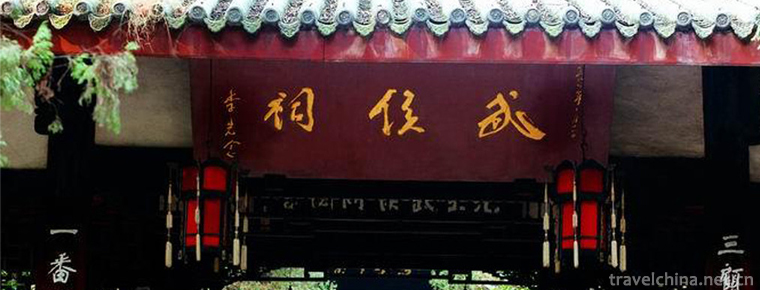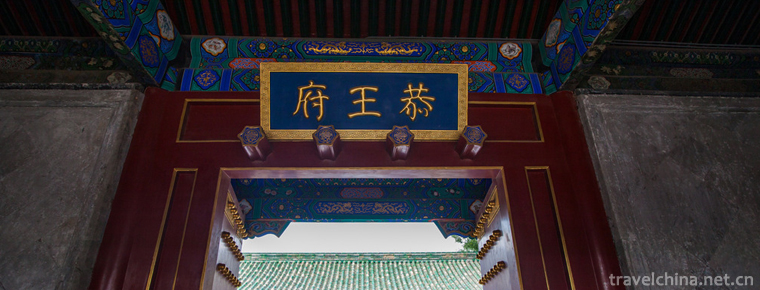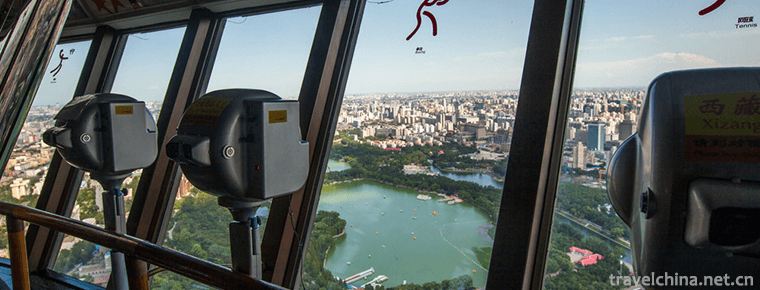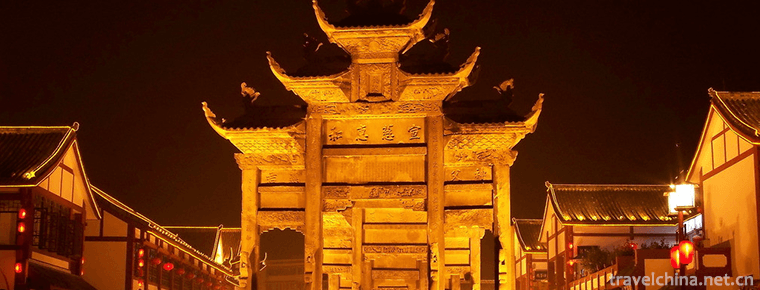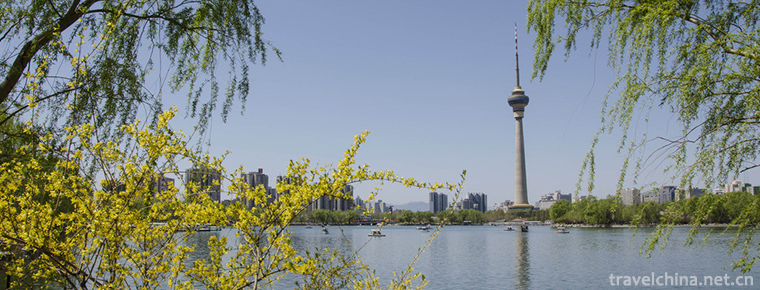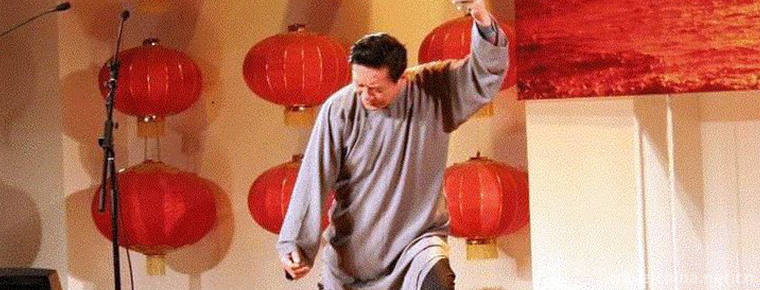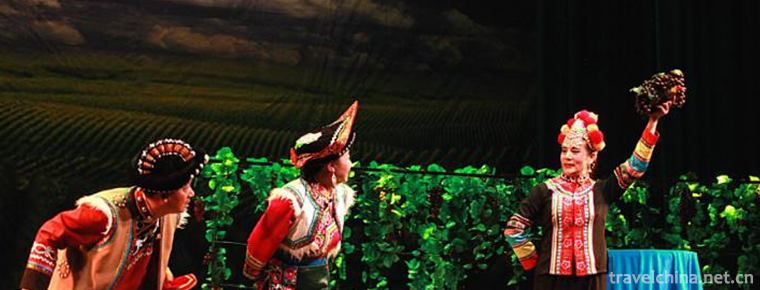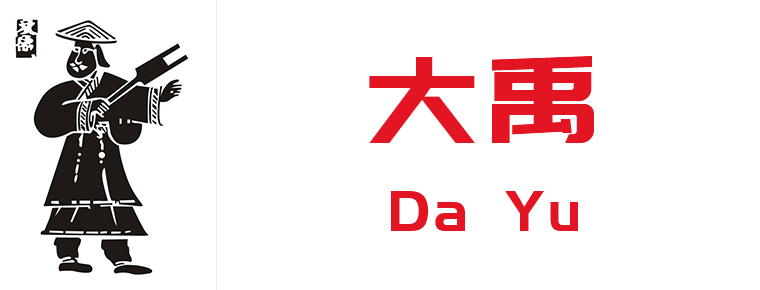Longtouguan
Longtouguan
Longtouguan, a cultural relic protection unit in Sichuan Province. Located in Jiangyang West Road, Jiangyang District, Luzhou City, Sichuan Province. Originally an ancient pass, it was built in the Shu Han Dynasty to build a wall for the earth; it was rebuilt in the 11th year of Chongzhen in the Ming Dynasty and rebuilt in the second year of Tongzhi in the Qing Dynasty. It is adjacent to Tuojiang River in the north and reaches the Yangtze River in the south, just like a giant dragon penetrating the two rivers. Luzhou city is surrounded by water on three sides and backed by mountains on one side. Longtouguan is the only channel, and it has been a place for strategists to fight for. On December 1, 1921, the Luzhou uprising led by the Chongqing local committee of the Communist Party of China broke out. Liu Bocheng served as the commander-in-chief of the former enemy. He arrived in Luzhou in January 1927. He fought a decisive battle with the army under the command of Liu Xiang at longtouguan, which made a brilliant page for the armed uprising. In 1991, in order to commemorate the 70th anniversary of the founding of the Communist Party of China, Luzhou people raised funds to repair the city tower and build the "Luzhou Uprising monument".
Building name
"Dragon through pass" is therefore called "dragon through pass", which is mainly described as two types:
One is to use metaphors to describe the name. "A dictionary of famous historical and cultural cities in China" says: "the north is near the Tuojiang River and the South reaches the Yangtze River, just like a giant dragon penetrating the two rivers, so it is named."
Second, the famous pass in the mountains. According to the "Jin Yue:" when discussing the geographical location of longtouguan in the stele of Xinjian shenarm pass (i.e. longtouguan), we can see that the original name of the mountain where longtouguan was built was Longtoushan (dashanping, Jiangyang District, Luzhou), and longtouguan was built on the mountain and named after the mountain.
"Longtouguan" is also known as "shenarm pass". This name began when Chongzhen of the Ming Dynasty was rebuilt. There are two ways to get the name of "shenarm pass":
One is to use metaphors to describe the name. "It is adjacent to Tuojiang River in the north and Yangtze River in the south. It is like a magic arm to lock two rivers, so it is also called shenarm pass."
Secondly, according to the records of Luxian County of the Republic of China, the inscriptions still exist, but the inscriptions are not recorded. Today, when we go to repair and visit, the inscriptions on the stele are incomplete, but the words can be read as follows: the inscription on the newly built shenarm pass, the October of the 10th year of Chongzhen, the Jin saying: Longtoushan is the throat of Zhongshan Mountain, and the name of shenarm pass can be read, which is what Lin Zhi called it? Kao Shenbei mountain, on the other side of today's Mituo field, is the old old LUZHENG. At the beginning of Chunhu period of the Song Dynasty, Yu Yu, who was the envoy of Luzhou, and Cao Zhida, who was known as Luzhou, moved to the state to govern here. There are shenarm gate, east gate and Ximen gate (see Shi Mo Yi Ji Zhuan and Zhang Wan Jia Nu Zhuan). Is this the name of Shenbei pass? It is named after the shenarm gate of the old city of Lu. For example, Luzhi was named after the relocation of Luchuan county
"Longtouguan" and "shenarm pass" are synonymous with famous Guan, which seems to be overlapped. There is no difference between "north facing" and "north facing", "south arriving" and "south facing". "Like a dragon penetrating the two rivers" and "like a magic arm locking the two rivers", the noumenon is the same, and the metaphor is different. It may be that the explanation of "longtouguan" is applied to "Shenbei pass", or it may be applied to "longtouguan".
geographical position
"Longtouguan" is located in "qihuali in the west of the city" and "Sichuan people's police school in Feiyue village", which is now the Sichuan Police Academy in the south of Jiangyang West Road in Luzhou city. Since the establishment of the Shuhan Dynasty, the orientation of "longtouguan" in Luzhou has changed. From the Shuhan Dynasty to the Ming and Qing Dynasties, the local chronicles, official history books and geography books all called "longtouguan" in the south of Luzhou. After the reign of Emperor Guangxu of the Qing Dynasty, it was renamed "longtouguan" in the west of Luzhou
1、 Located in the west of Luzhou city.
"Lu county annals of the Republic of China" said: "long through the pass, seven miles away from the west of the city."
"Guangxu Luzhou Zhili state annals" said: "long through the pass, in the state West seven Li."
2、 Located in the south of Luzhou city.
The history of the Ming Dynasty: "there is a dragon pass through the south."
"Add Guang Yu Ji": "dragon through the pass, the south of the state."
"The great Ming Dynasty unified annals" says, "the Dragon passes through the pass, seven Li in the south of the city."
"Jiajing Sichuan general annals" says: "long through the pass, the state governs seven Li in the south."
"Jiaqing Sichuan Tongzhi" said: "long through the pass, in the south of the state seven Li."
"Daming unified scenic spot annals" said: "long Jian Guan, seven miles away from the south of the state."
"Qianlong Zhili Luzhou annals" said: "long through the pass, in the south of the state seven Li."
"Jiaqing Zhili Luzhou annals" said: "long through the pass, in the south of the state seven Li."
"Jiaqing rebuilt a unified annals": "long through the pass, in the south of the state seven Li."
In Jiaqing's revision of the unified annals, "the Dragon passes through the pass, and the chronicles of the state says," it's five li in the south of the state. "
According to the modern satellite map, "longtouguan" is located in the southwest of Luzhou city. The above-mentioned "in the south of the state", "seven miles away from the south of the state", "in the west of the state" or "seven miles away from the west of the city", or should be one place, are all seven miles southwest of the state. However, due to the different perspectives of the observers, there is a difference between the two.
Starting time
"Longtouguan" and "built in Shuhan" seem to be accurate according to historical records.
First, the records of the unified annals of the Ming Dynasty.
"The great Ming Dynasty unified annals" says, "the Dragon passes through the pass, which was established by Zhuge Liang."
In Jiaqing Sichuan Tongzhi: "long touguan, mingtongzhi:" it is said that it was established by Marquis Wu. "
In the annals of Jiaqing's restoration of Yitong: "the Dragon passes through the pass, and the annals of the Ming Dynasty say," it was established by the Marquis of Zhuge. "
Second, the records of the revised Guangyu Ji.
"Add Guangyu Ji" says: "long through the pass, Zhuge Liang Li in the world."
In the records of Luzhou, Zhili, Qianlong, it is said that "longtouguan and Guangyu records say:" the Marquis of Zhuge were established in the world. "
According to the records of Luzhou in Zhili County of Jiaqing County, "longtouguan" and "Guangyu Ji" say: "the Marquis of Zhuge are established in the world."
"Guangxu Luzhou Zhili Zhouzhi" says, "long touguan," guangyudi Ji "says:" hereditary Zhuge Wuhou. "
"Records of Luxian County of the Republic of China" says, "long touguan" and "Guangyu Ji" say: "the hereditary Zhuge and Wuhou are established."
Third, the records of Jiajing Sichuan general records.
"The general annals of Jiajing Sichuan Province" says that "longtouguan was established by the hereditary Marquis Wu."
Fourth, the records of the records of the great Ming unified scenic spots.
"The great Ming Dynasty unified scenic spot annals" said, "long Jian Guan, Zhuge Liang Li."
Fifthly, it is recorded in the records of Luxian county.
"Lu county annals" says: "ZHUGE Liang of Shu Han Dynasty is a city according to the mountain situation It is called longtouguan
According to the above documents, it can be seen that longtouguan was built in Shuhan Dynasty, and Zhuge Liang was the first to build it. However, it is impossible to make a textual research on it, or to say it is "handed down from generation to generation". Based on the conclusion of the time when longtouguan was first built, it will not be explained here. However, it will be explained here whether the founder of longtouguan was Zhuge Liang. If it is said that the longtouguan was built by Zhuge Liang, unless Zhuge Liang ordered the governor of Jiangyang to build the pass in the name of the Prime Minister of Shuhan Dynasty, Zhuge Liang must visit Jiangyang to build longtouguan. There are no more than two records of Zhuge Liang and Jiangyang appearing at the same place (chushibiao: Lushui of "crossing Lu in May" is at the intersection of Jinsha River and Yalong River, which has nothing to do with Jiangyang).
The first one is from Yongle Dadian: "the first emperor went to Yizhou, and sent Zhuge Liang and Zhang Fei to lead troops back to Jiangyang, that is, today's Prefecture."
The second, from the Yuanhe County Atlas: "in the early days, Cao Gong entered Hanzhong, Zhuge Liang left tujiangyang."
The third is from the records of the great Ming unified scenic spots: "Wei Wu Tun Han Zhong, Zhuge Liang out of Tuen Jiangyang."
According to the first article, it was recorded in the 17th year of Jian'an (212), when Liu Bei entered Shu.
According to several records in the annals of the Three Kingdoms, Zhuge Liang captured and stayed in Jiangyang
"Next year (the 17th year of Jian'an), Zhuge Liang, Zhang Fei, Zhao Yun and other generals will go back and set Baidi, Jiangzhou and Jiangyang."
"The first Lord came to Yizhou, but also attacked Liu Zhang. He flew upstream with Zhuge Liang and divided the counties. To Jiangzhou, breaking Zhang will be the prefect of Bajun Yan, born to win Yan. "
"Liang Ruyun and Zhang Fei all went back to Jiangxi and Pingding prefectures and counties. To Jiangzhou, he sent clouds to Jiangyang from the outside water, and met with liang in Chengdu. "
Zhuge Liang, together with Zhang Fei and Zhao Yun, went back to Sichuan along the river. Zhuge Liang advanced to occupy Baidi, and later entered Jiangzhou with Zhang Fei and Zhao Yun, and finally went straight to Chengdu; Zhang Fei entered Jiangzhou; Zhao Yun left Jiangzhou and occupied Jiangyang. It can be seen from this that the so-called "sending Zhuge Liang, Zhang Fei, etc. to lead troops back and settle Jiangyang" in Yongle Dadian should actually be Zhao Yun's "tracing the flow to fix Jiangyang" in "waiting". However, Zhuge Liang did not stay in Jiangyang, let alone build a dragon pass.
The second and third items are recorded in the 20th year of Jian'an (215), when Cao Cao occupied Hanzhong.
According to the records of the Three Kingdoms: "in the past 20 years, Sun Quan, the first lord, had already acquired Yizhou, and his envoys wanted to get Jingzhou. The first master said, "if you want to get Liangzhou, you should use Jingzhou as your counterpart." He sent LV Meng to attack Changsha, Lingling and Guiyang. First, he led 50000 soldiers to the police and ordered Guan Yu to enter Yiyang. Cao GONGDING Hanzhong, Zhang Lu fled Brazil. After hearing this, he and Quan Lianhe belonged to Jingzhou, Jiangxia, Changsha and Guiyang in the East, Nanjun, Lingling and Wuling in the west, and led the army back to Jiangzhou. "
It can be seen from the above that in the 20th year of Jian'an (215), when Cao Cao occupied Hanzhong, Liu Beishang was at war with Sun Quan in Jingzhou. After getting the news that Cao Cao had already occupied Hanzhong, in order to prevent Cao Cao from taking advantage of the situation to attack Yizhou, he hastily made peace with Sun Quan, and led his troops back to Jiangzhou to prepare for their return to Chengdu. At this time, Zhuge Liang led his troops from Chengdu to Jiangyang, probably in order to meet Liu Bei as soon as possible, discuss how to deal with Cao Cao, and go back to Chengdu with Liu Bei. In this case, Zhuge Liang was out of Tuen Jiangyang. The situation was urgent. His stay could not be too long. His action could not be too big. It was impossible to build the Dragon pass.
Historical evolution
From the beginning of its construction to the present, it can be divided into three periods according to the three important events of construction, reconstruction and reconstruction
1、 It was built in the Shu Han Dynasty and rebuilt in the Ming Dynasty.
Since there is no clear record of longtouguan in local chronicles, historical books and geography books from Shuhan to Yuan Dynasty and the early Ming Dynasty, only the records of the time when longtouguan was built can be determined. For the following records, please refer to the entry of the initial construction time (however, the above records are all recorded by later generations, and the credibility remains to be discussed).
2、 From the reconstruction in the Ming Dynasty (1638, Chongzhen 11) to the Qing Dynasty (Tongzhi 2nd year, 1863), it was called "shenarm pass" or "longtouguan".
"The history of the Ming Dynasty" says, "the Dragon passes through the pass, and the Chongzhen building should be made up."
In Jiaqing Sichuan Tongzhi: "the Dragon passes through the pass, and the state annals says," it was built in Chongzhen of the Ming Dynasty. "
"Qianlong Zhili Luzhou annals" said: "long through the pass, the Ming Chongzhen late repair, tablet still exist."
According to the records of Luzhou, Zhili, Jiaqing: "the Dragon passes through the pass, and the stele remains in the late Chongzhen period of the Ming Dynasty."
"Guangxu Luzhou Zhili state annals" said: "long through the pass, the late Ming Dynasty (Chongzhen) repair, the old site collapsed."
"Records of Luxian County of the Republic of China" states that "longtouguan was built at the end of Chongzhen in the Ming Dynasty, and there was a new stele of shenarm pass built in the 11th year of Chongzhen (see attached), which can be identified
3、 It was rebuilt in the Qing Dynasty (Tongzhi 2 years, 1863) until now, known as "longtouguan".
"Lu county annals of the Republic of China" says, "long touguan, the most important pass today, was built by Zhou Xiling, the official of Tongzhi in the second year of the reign of Tongzhi."
"Guangxu Luzhou Zhili state annals" said: "the dragon through the pass, the late Ming Dynasty, the old site collapsed. In the second year of Tongzhi reign, Zhou Xiling was appointed to rebuild yuezhuan's mansion. In the south of the pass, Dajiang was located in the South and Xiaojiang in the north. The walls and battlements were built for more than ten li. In his spare time, he often supervised the work on foot, and the work was redoubled. In a few months' time, it was completed. (now, the stele of gulong touguan is preserved, see attached)
Appendix 1: stele of gulong touguan: "Gulong touguan, written by Huang Xing in Wu County, was established in Kuhai in the second year of Tongzhi reign.".
Appendix 2: the inscription of the new shenarm pass: "on November 17, the 10th year of Chongzhen reign, Yu Fu arrived in Jiangyang. But at that time, Zhou Zhong (que four characters) urgent (que one word), Mou so shou (que three words). Jin said: Longtoushan is the throat of Zhongshan Mountain. It is the throat of Zhongshan Mountain to guard the situation (the word que) and the situation (the word "Que") and "I" (the word "Que") without enough. There is only a line of communication (three characters of Que). He called for a carpenter to cut wood (que three characters), and set a pass at the place where the road was built. The stone was the base. The height could be more than ten meters. If it was wide, it would be twice as wide. In the middle, a door should be left for the entrance and exit. On the first floor, (que word) lattice layout, then look at it. The gate is good for defense. The name is: shenarm pass. As soon as it is finished, the six characters of the que can not be seen. The height measurement (character que) looks far away (que) and the winding path in the deep mountain, but it is not profitable. Moreover, the soldiers (que 6) will shoot the stone calmly (que 4 character) and when there is a police self-sufficient to control the thief's death, it is up to me to win the battle. It started from Ding Chou and finished in December. Read (que word) day, all wood and stone workers fees are (que two words), fixed public currency. Those who have been doing things all the time are Wei's experience and Jiang Fu's. At that time, Zhou shou (word que), Ming Xin Zhi (que Yi Zi), Guan juecheng (que Er Zi), and Guang (que Si Zi) Guan were all successively completed, which is a record. In the 11th year of Chongzhen's reign, Meng chunjili was born in Wuyin. The officials of the southern Sichuan Province were appointed to serve the political affairs
Architectural nature
Since the beginning of longtouguan, its architectural nature has changed twice. "Originally an ancient pass", later for the city defense pass, now for the architectural monuments.
1、 Pass period.
From Shu Han to Yuan Dynasty, "longtouguan" was named Guan. In the Ming Dynasty, it was classified as "pass" in "zengding Guangyu records"; it was classified as "GuanLiang" in "the unified annals of Ming Dynasty" and "Sichuan general annals of Jiajing". In the Qing Dynasty, the name of Guan was adopted in the history of Ming Dynasty, which was classified as "pass" in the records of Luzhou in Qianlong, Luzhou in Jiaqing, Zhili in Luzhou in Guangxu, Sichuan Tongzhi in Jiaqing, and Yitong in Jiaqing.
The ancient Chinese dictionary says: "Guan, noun and barrier, are set up in the boundary to inspect business and travel, as well as passes and fortresses; passes, key places; Guan Liang, pass and Jinliang. It refers to the main road of land and water transportation. " Modern Chinese Dictionary: "Guan, noun, is the guard place set up in the places with dangerous traffic or border entry and exit in ancient times; pass, book title, language, noun, dangerous pass." Therefore, in ancient times, the pass was mostly independent of the city (but also related to the combination of pass and city, such as Tongguan), and was not an inevitable part of the city (although the pass was also an important part of the city defense system, it was not the composition of the city).
2、 The period of city defense pass.
With the development of commodity economy in the Ming and Qing Dynasties, the urban population of Luzhou was increasing, the city scale was also expanding, the city defense system was also expanding, and the original city wall could not meet its needs. The location of "longtouguan" has changed from being far away from the city to being close to the city. Finally, it was absorbed by the city and became the gateway of the outer city.
"Guangxu Luzhou Zhili state records": "Tongzhi two years Reconstruction, Guannan to Dajiang, north to Xiaojiang, more than ten miles of walls and battlements
"Records of Luxian County of the Republic of China" classifies "longtouguan" into "Chengguo", and records: "seven miles to the west of the city, there is Guo (outer city), South to Dajiang River, north to Tuojiang River, which is more than ten li of the city battlements. It is said in Chinese that" longtouguan "is now called Danggu."
In the Luzhou uprising, "longtouguan", as a key defense area of Luzhou's outer city, has become an important place repeatedly contested by the enemy and our armies. We can also see that at this time, "longtouguan" is not only a pass located in the periphery of Luzhou, far away from the city, but also an important part of Luzhou's urban defense. So far, the "dragon through pass" has completed the transformation from the pass to the city defense pass.
3、 Historic buildings, national defense education base and patriotism education base.
Since the 1980s and 1990s, "longtouguan" has become "Luzhou municipal cultural relics protection unit", "Sichuan provincial cultural relics protection unit", "patriotism education base" and "national defense education base". Today's "longtouguan" ancient architectural site, national defense education base and patriotism education base, is composed of Luzhou Uprising monument, longtouguan city wall, guanlou, thousand steps ladder, stele forest and other landscapes.
Related events
The uprising broke out
At about 16:00 on December 1, 1926, yuan Pinwen, brigade commander of the fourth brigade of the former Sichuan frontier army Lai Xinhui's army stationed in Luzhou and Chen Lanting, commander of the 10th brigade, detained Li ZhangFu, the reactionary brigade commander of the second brigade in lantianba brigade of the fourth brigade, and at the same time gathered their troops to announce the Luzhou uprising. The uprising troops attacked the city overnight, and all the regiments of Libu were defeated and disarmed. By the next day, the uprising forces completely occupied Luzhou. On the same day, yuan and Chen electrified the whole country and announced that they were commander of the fourth and fifth route of the Sichuan army of the national revolutionary army.
The course of the uprising
In January 1927, the military committee of the Chongqing local committee of the Communist Party of China held a meeting and decided that Liu Bocheng should direct the Luzhou uprising. Liu Bocheng arrived in Luzhou at night and led the uprising army to rectify the military and political affairs, civil affairs, finance, culture and education. On the 24th, he issued the notice of the general headquarters of the Sichuan army of the national revolutionary army. Later, Liu Bocheng set up a school in Luzhou to train talents for social activities. At the same time, we organized forces to widely publicize the national revolution and strive for the support of all sectors of society. In February, Chiang Kai Shek, commander-in-chief of the National Revolutionary Army and the Northern Expedition army, secretly instigated Sichuan warlords to oppose the Communist Party and secretly ordered Liu Xiang to eliminate the revolutionary forces in Central Sichuan. On April 5, Liu Xiang, with Lai Xinhui as the commander-in-chief, organized the "Sichuan Guizhou United Army" and led his troops to besiege Luzhou. On the 7th, the general headquarters of the uprising army issued martial law to prepare for the anti siege.
On April 9, 1927, Liu Bocheng withdrew all the troops outside Luzhou into Luzhou and concentrated his forces to defend the city. On the 13th, the headquarters of the uprising army held a meeting to denounce the counter revolutionary crimes of Chiang Kai Shek and Liu Xiang, and mobilized the army and the people to prepare for the war. In April, Liu Wenhui dispatched three brigades to Changchang to longtouguan, and Liu Xiang adjusted his forces and ordered the city to be attacked. Because Lai Xinhui's command of the United Army's attack by water was blocked many times, he organized a death squadron to attack by land. Liu Bocheng personally came to longtouguan to fight back the United forces. On the 30th, the Allied forces launched an all-round attack, artillery bombarded them fiercely, infantry crossed the river to attack the city from many places, and the uprising army carried out tenacious resistance. By the next morning, the coalition troops were defeated. On May 12, Liu Xiang sent a telegram to "crusade" the uprising army, but because of the defeat in the previous war and the different feelings of the United forces, the attack was not carried out.
The result of the uprising
On May 12, 1927, in view of the worsening situation of the uprising, Liu Bocheng left Luzhou secretly with Han Bocheng and Zhou Guogan at dawn on the same day and traveled to Wuhan. Liu pingting and others announced their acceptance. On the 23rd, due to the suspicion of Liu Xiang, he led his troops to withdraw from Luxian county and enter Guizhou. Later, they were recruited by the Guizhou army. The Luzhou uprising failed.

-
Wuhou Temple in Chengdu
Martial Marquis Memorial Temple,Chegdu city,Sichuan Province.
Views: 213 Time 2018-09-29 -
The Prince Gongs Mansion
Liu Yin Street, Xicheng District, Beijing, China.
Views: 211 Time 2018-10-12 -
Central Radio and Television Tower
The Central Radio and Television Tower, now a national 4A scenic spot, is located on the west side of West Third Ring Road, Haidian District, Beijing. Near the Space Bridge, it faces beautiful Yuyuant.
Views: 141 Time 2018-12-22 -
Longchang Shipaifang Tourist Area
Located in Longchang City, Sichuan Province, China, Longchang Stone Memorial Architecture is a very important type of traditional Chinese architecture. It was rated as a class 4A tourist attraction by.
Views: 170 Time 2019-02-06 -
Longxing Temple
Longxing Temple, alias Dafo Temple, is located in Dongmenli Street, Zhengding County, Shijiazhuang City, Hebei Province. It was originally Longteng Garden of Yanmu Rongxi after the Eastern Jin Dynasty.
Views: 159 Time 2019-02-06 -
yuyuantan park
Yuyuantan Park, AAAA grade scenic spot, is located in Haidian District. East Gate is adjacent to Diaoyutai State Guest House; West to West Third Ring Road is separated from CCTV Tower; South Gate is n.
Views: 163 Time 2019-03-08 -
Pearl rice paste
Pearl rice paste is a delicacy. The main raw material of this dish is fresh pearl rice. The main condiment of this dish is sugar. This dish is mainly made by boiling..
Views: 296 Time 2019-03-23 -
Jingzhou Miao Geku
The Miao people's song (tgong) has been declared as the first batch of national folk intangible cultural heritage and one of the two "national treasures" of Huaihua City..
Views: 132 Time 2019-05-08 -
Shandong Express Book
Shandong Quick Book, originating from Shandong Province's local traditional folk art form, has a history of more than 100 years. It was first popular in Shandong, North China and Northeast China, and .
Views: 168 Time 2019-06-13 -
Yi opera
Yi Opera, a local traditional drama in Dayao County, Yunnan Province, is one of the national intangible cultural heritage..
Views: 399 Time 2019-07-12 -
Da Yu
Yu, surnamed Si, is famous for his life. (Yu Yu is the name). History is called Da Yu and Emperor Yu. Xia Hou Shi Chieftain Xia Dynasty The founding king. Yu is Yellow Emperor Great grandson, Zhuan Gr.
Views: 181 Time 2019-09-07 -
Dazhou Railway
Railway lines: Chengdu Chengdu Railway, Xiangyang Chongqing railway, Dazhou Wanzhou railway, Daba railway and Chengdu Dazhou Wanzhou high speed railway (planned) .
Views: 70 Time 2020-12-20
